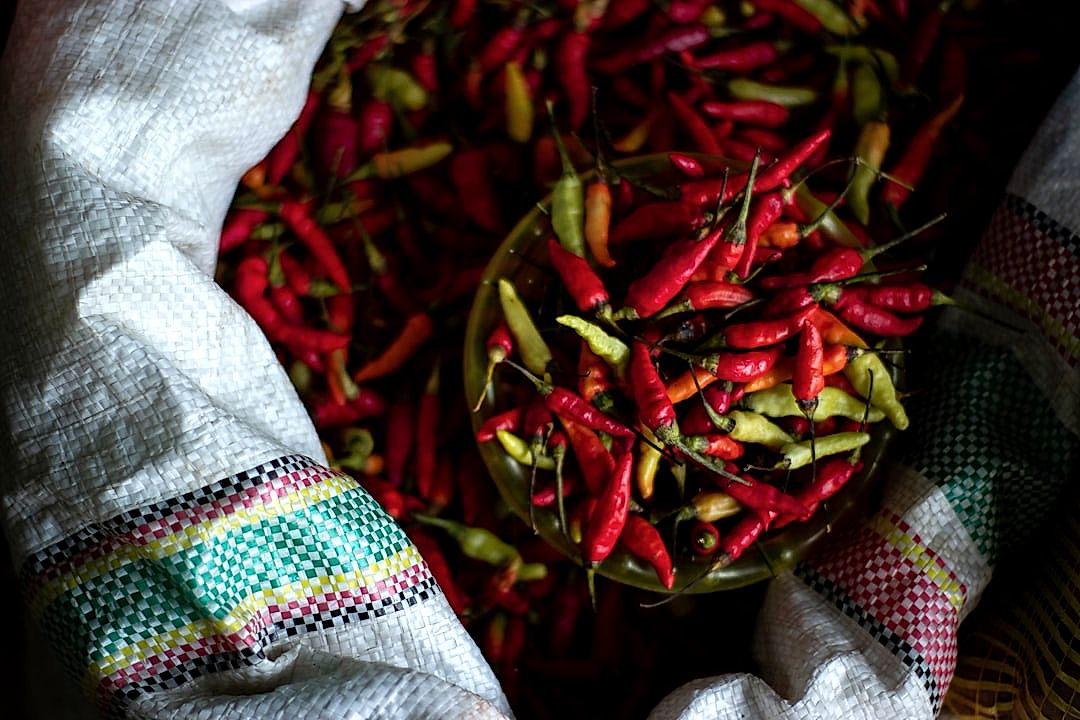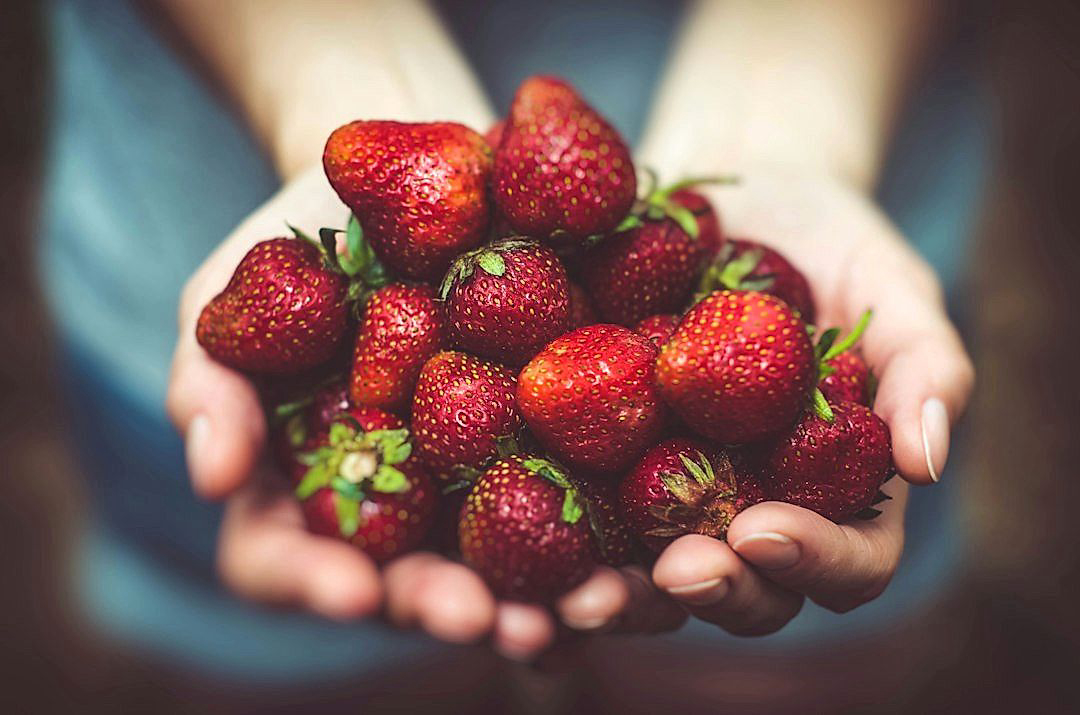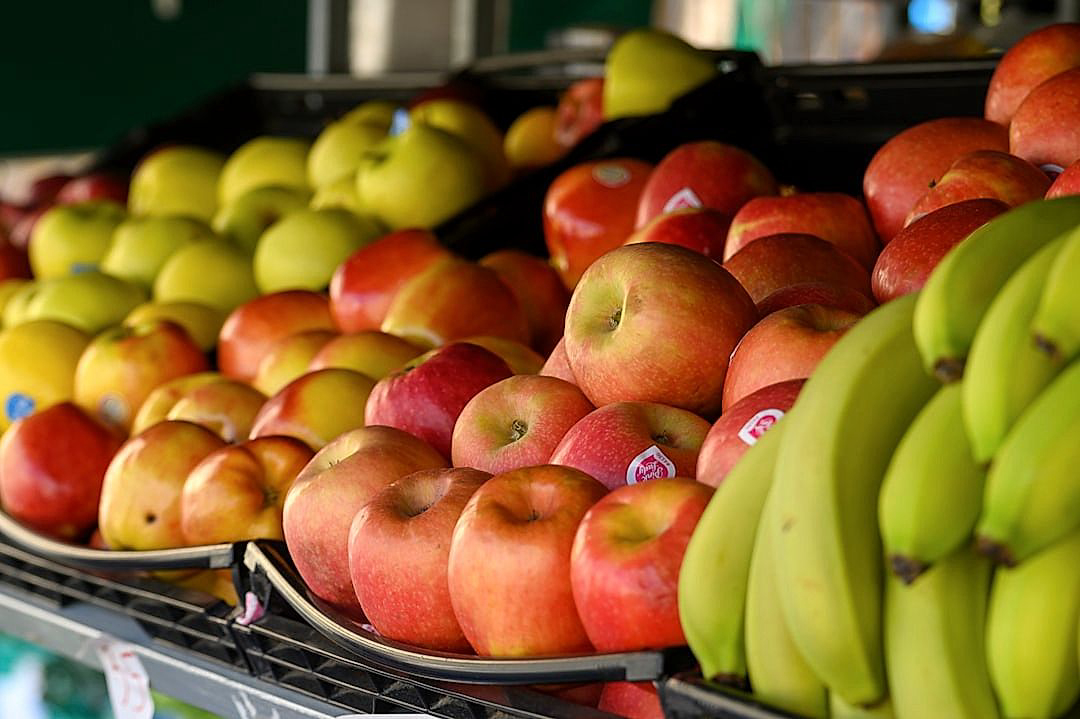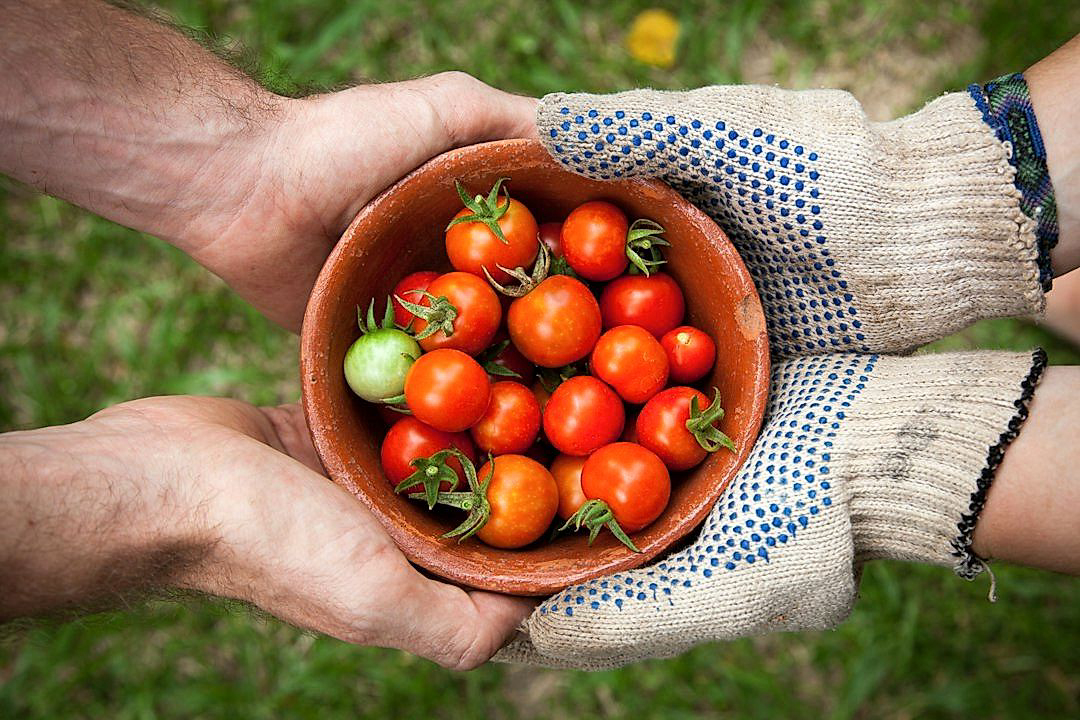In the world of fresh produce, the way items are packaged is undergoing significant changes.
This industry is advancing rapidly, striving to meet growing consumer demands while also contending with environmental considerations.
High-tech, sustainable solutions are increasingly favored, introducing a complete overhaul in methodologies.
These groundbreaking innovations are not only revolutionizing packaging methods but also leading the entire sector onto a more progressive path.
As we delve into this topic, we aim to shed light on some key developments.
It is essential to note their potential influence on shaping the future of the fresh produce industry.
Contents
- Innovations Shaping The Future Of Produce Packaging
- 1. Compostable and Biodegradable Packaging Materials
- 2. Edible Food Packaging Technology
- 3. Nano Coating for Extended Shelf Life
- 4. Smart packaging with freshness indicators
- 5. Use of algae or mushroom-based packaging
- 6. Active Packaging Using Anti-Microbial Agents
- 7. Advanced Modified Atmosphere Packaging (MAP) technology
- The Bottom Line
Innovations Shaping The Future Of Produce Packaging
1. Compostable and Biodegradable Packaging Materials
The future of produce packaging is increasingly leaning towards environmentally-friendly initiatives, hence the interest in compostable and biodegradable packaging materials.
The use of compostable materials in packaging not only reduces waste but also contributes positively to the environment
Unlike conventional plastic packaging materials, compostable packaging materials break down into natural components within a relatively short period.
Biodegradable packaging materials provide a similar ecological benefit since they can degrade and return to the environment without leaving a heavy carbon footprint.
The rise of compostable and biodegradable packaging materials represents a significant breakthrough in counteracting plastic pollution, which has become a global concern.
Emerging innovations, such as plant-based plastics, are gaining attention due to their potential to revolutionize the packaging industry.
These green alternative materials, made from renewable resources like corn, beet, and cassava, decompose naturally, leaving virtually no toxic residue.
Utilization of crop waste for packaging materials not only minimizes waste but also provides a sustainable and cost-effective solution for farmers and the packaging industry alike.
Seaweed is another highly versatile, renewable resource that is increasingly being harnessed for its potential in biodegradable packaging production.
Unlike plastic, which may take centuries to decompose, compostable and biodegradable packaging can degrade in a matter of weeks or months.
Through these sustainable packaging solutions, manufacturers can drastically reduce their carbon footprint, conform to stricter environmental regulations, and cater to eco-conscious consumers.
Moreover, these materials can be home composted, providing the consumer with a significant role in achieving a circular economy.
Despite the higher costs associated with transitioning to compostable and biodegradable packaging, businesses are increasingly investing in this field reflecting its long-term environmental and economic potential.
These game-changing packaging options not only protect products but also play a fundamental role in advancing the sustainability agenda across the globe.
As a vital component of the march towards sustainability, compostable and biodegradable packaging materials are more than just a trend; they represent a paradigm shift in the industry.
2. Edible Food Packaging Technology
The realm of produce packaging is witnessing exceptional advancements and the innovation of edible food packaging technology is an impressive stride in the sustainability endeavor.
This groundbreaking technology is providing a solution to the increasing demand for environmentally-friendly packaging materials.
Edible food packaging is developed using various biodegradable and edible materials which are harmless to the environment as well as the human body.
The critical component that differentiates this technology from others is its minimal waste generation because the packaging is designed to be consumed along with the food.
A remarkable feature of this technology is that the edible packaging can also serve to enhance the sensory experience of the food product it contains.
Foods can be incorporated with additives, flavors, or nutrients within the packaging materials which ultimately contribute to the quality and taste of the food product.
Various industries, especially the food and beverage sector, are greatly inclined towards this technology due to its zero net waste prospect.
It signals a significant move towards a sustainable future by reducing the environmental impact associated with food packaging waste.
Furthermore, the development of edible coatings on fruits and vegetables is boosting the shelf-life of fresh produce, ensuring prolonged freshness and reducing waste.
These coatings are made from a variety of substances including proteins, lipids, and polysaccharides, which are safe for consumption and do not alter the quality of the product.
Characteristics such as transparency, mechanical properties, and water vapor permeability can be customized to meet specific product needs in edible packaging.
Alterations in the thickness, roughness, and appearance can also be made according to the nature and requirements of the food products.
In spite of the abundant benefits, there are also challenges that need to be addressed in edible food packaging technology.
These include developing packaging materials that can withstand transportation and storage conditions without compromising the packaging integrity and food safety.
Additionally, the cost of production and the consumer’s adaptation towards this new technology might pose challenges in its widespread adoption.
Nevertheless, the introduction of edible food packaging technology in the industry is a definite step forward towards eco-innovation in produce packaging and shaping a more sustainable future.
3. Nano Coating for Extended Shelf Life
One of the profound innovations in the field of produce packaging is the application of nano coating for extended shelf life.
The concept of nano coating revolves around the application of nanotechnology in food packaging.
This technologically advanced method has the potential to substantially increase the shelf life of a wide array of food products, including fruits and vegetables.
Nanotechnology, in the context of food packaging, uses nanometer-sized particles to develop a protective layer over the food product, which acts as a barrier against external factors like moisture, gas, dust, and microorganisms.
The nanocoating, thus, acts as an additional protective layer to aid in maintaining the freshness and nutritional value of the produce for an extended period.
This innovation not only ensures the freshness and integrity of the food product but also reduces food wastage resulting from premature spoilage.
In essence, nano coatings can be designed to possess various beneficial properties, depending upon the requirements of the specific food product.
For instance, some nano coatings may have antimicrobial properties to inhibit the growth of microbes, while others may have improved gas barrier properties to prevent the oxidation of food products.
It is also noteworthy that this emerging technology can serve as a means to incorporate food additives, flavoring agents, or nutrients into the coating.
This method, therefore, contributes to the functionality of the product, by enhancing its sensory and nutritional quality.
Furthermore, the application of nano coating is not just limited to the external packaging, but can also be applied directly on the surface of fresh produce.
This can potentially eliminate the need for conventional plastic packaging, which is a significant source of environmental pollution.
By adopting such eco-friendly and advanced packaging solutions, we are ushering into a future where food products can be preserved in a more sustainable way, without compromising on their quality or nature.
However, it is equally important to mention that the global adoption of this technology constitutes a mandate to ensure the safety and regulatory compliance of nano-coated packaging materials.
The exploration and expansion of this technology require extensive research and testing in order to confirm its safety and efficacy.
Despite the potential challenges, the innovative application of nano coating in food packaging is considered as a major step towards the future of produce packaging.
4. Smart packaging with freshness indicators
One innovative development that is reshaping the future of produce packaging is the advent of smart packaging with freshness indicators.
This technology includes sensors and indicators embedded in the packaging materials that can track and display the freshness level of the produce contained within.
Typically, these freshness indicators work by reacting to certain chemicals released by fruits and vegetables as they ripen and decompose, allowing them to provide real-time information about the status of the food item.
The objective of this smart technology is to ensure optimal consumption quality, minimize food spoilage, and reduce food waste.
For instance, if the level of ethylene gas, a hormone that fruits release as they ripen, reaches a certain concentration within the packaging, aforementioned sensors would change color.
These color changes visually inform the consumer about the ripeness of the produce, aiding them in making informed decisions about their purchase or consumption.
Moreover, some smart packaging technologies can even connect to a smartphone or other device, providing consumers with digital notifications about food freshness.
This allows for a more convenient and interactive shopping experience, which can convince customers to prefer certain brands or products.
It is especially useful for consumers who prioritize freshness and quality, as it empowers them with greater control over their food choices.
However, implementing smart packaging with freshness indicators does present some challenges, such as increased packaging costs.
Yet, many argue that the benefits – particularly the potential to reduce food waste – considerably outweigh these considerations.
Naturally, this innovation may have a profound impact on the future of the food industry, presenting a fresh approach for addressing global food waste and sustainability issues.
Apart from minimizing food waste, smart packaging also offers potential benefits for retailers and manufacturers, like improved inventory management.
They can use the smart indicators to monitor produce freshness, assisting them in better managing inventory flow and shelf stocking.
Indeed, this versatile innovation combines the principles of science, technology, and design to create a more sustainable and efficient future for produce packaging.
Therefore, smart packaging with freshness indicators exemplifies the transformative potential of packaging technology, establishing a new standard of innovation and efficiency in the produce industry.
5. Use of algae or mushroom-based packaging
The evolution of sustainable methods has seen the rise of innovative materials like algae or mushroom-based packaging.
The remarkable aspect of these materials is their ability to degrade naturally, reducing their impact on the environment.
Algae based materials, for instance, present an interesting alternative in packaging solutions.
These materials are developed from seaweed or other types of algae, which offer an environmentally friendly solution to plastic waste.
It is important to note that algae are readily available in vast quantities in the ocean, making them an unperturbed source of raw material.More interestingly, algae grows quickly, absorbing carbon dioxide in the process, thus potentially contributing to a reduction in global warming.
Moreover, their quick decomposition process reduces the timespan of material waste from a few hundred years (as in the case of plastics) to a few weeks.
On the other hand, mushroom-based packaging material is another impressive innovation in the sustainable packaging industry.
It is created from the roots of mushrooms known as mycelium, coupled with other agricultural wastes such as corn husks.
The material is molded into desired shapes and then heated to cease growth, making a biodegradable package which can replace Styrofoam and other materials that are harmful to the environment.
Mushroom-based packaging is also reported to have a low production cost, being a truly a win-win innovation.
Aside from the environmental advantages, both algae and mushroom-based packaging provide new layers of product protection.
For example, the porous nature of mushroom-based packaging offers excellent shock absorption for delicate items such as glassware.
Additionally, algae-based packaging has the added advantage of being lightweight, which can reduce transportation costs.
This innovative approach to packaging not only moves towards improved sustainability but also adds value to product protection and presents cost-effective benefits in the longer run.
In the quest for sustainability, these biodegradable materials sign a new dawn of produce packaging, transforming the industry into a more environmentally responsible sector.
6. Active Packaging Using Anti-Microbial Agents
One of the most promising breakthroughs in the produce packaging industry is the introduction of active packaging using anti-microbial agents.
This innovative approach looks to enhance the safety and quality of food by releasing or absorbing substances into or from the food and its surroundings.
Specifically, the anti-microbial agents integrated into the packaging function to inhibit the growth of bacteria and fungi, which are primarily responsible for the spoilage of fresh produce.
Active packaging with anti-microbials can, therefore, significantly extend the shelf life of fruits and vegetables, allowing them to stay fresh for longer periods.
Moreover, it can also enhance the sensory properties of the food, such as its taste, smell, and texture.
The use of anti-microbial agents in active packaging positively contributes to maintaining the overall nutritional quality of the produce, making it a highly beneficial innovation.
A variety of anti-microbial substances can be used in active packaging, such as organic acids, enzymes, essential oils, and even metallic ions, each having their unique set of advantages.
The integration of these substances into the packaging can be achieved in several ways, such as being coated onto the package surface or incorporated into the packaging material.
Despite its numerous benefits, this technology does face challenges and considerations, such as ensuring that the anti-microbial agents are effective against a wide range of microorganisms and are not harmful to human health.
Moreover, the application of these agents must not alter the organoleptic qualities of the packaged food, such as its taste and texture.
Additionally, the cost-effectiveness and sustainability of utilizing anti-microbial agents in packaging also need to be thoroughly assessed.
With continued advancements and rigorous testing, there is no doubt that active packaging using anti-microbial agents will increasingly play a pivotal role in enhancing food safety and quality.
Going forward, this packaging technology signifies a move towards more active interactions between the packaging and its contents to ensure optimal conditions for freshness and longevity.
It presents a significant step forward in our attempt to reduce food waste, support sustainability, and ensure the provision of high-quality fresh produce.
As the industry pushes towards achieving these goals, we are likely to see an increased adoption and continuous evolution of this innovative packaging approach.
7. Advanced Modified Atmosphere Packaging (MAP) technology
Among the latest innovations dramatically changing the landscape of produce packaging is the introduction of Advanced Modified Atmosphere Packaging (MAP) technology.
Historically, preserving the freshness of produce during storage and transportation has always been quite a challenge.
With the advent of MAP technology, this hurdle is gradually being overcome.
MAP technology functions by altering or modifying the atmosphere within the packaging to slow down the natural process of spoilage of stored produce.
This is achieved by replacing the air within the packaging with a tailored mix of different gases which help preserve the produce for a longer period.
The most commonly used gases in this technique include oxygen, carbon dioxide, and nitrogen.
Each of these gases play a crucial role in preserving the freshness, flavor, texture, and color of the fruits or vegetables packed within.
The role of MAP technology is to extend the shelf life of produce, maintain its quality, and reduce food waste, which makes it a boon for the food industry.
It is crucial to note that the proportion of these gases can be adjusted according to the specific produce being packaged.
This allows businesses to use MAP technology for a variety of fruits and vegetables with differing preservation requirements.
In recent years, the MAP technology has seen upgrades, making it more effective and precise, hence the term Advanced Modified Atmosphere Packaging.
These advancements have led to the creation of smart versions of MAP technology that can adjust the gas levels within the packaging in real-time.
Such intelligent systems monitor the condition of the produce and adjust the gas levels accordingly to maximize freshness.
This not only extends the shelf life further but also maintains the nutritional value of the produce.
Advanced MAP technology is thereby paving the way for a sustainable and efficient packing solution for the food industry.
It is safe to say that this technology has now become an essential tool for produce packaging companies worldwide.
Looking towards the future, we can expect MAP technology to further evolve and become even more precise and efficient, all of which bodes well for the health of both the consumers and the planet.
The Bottom Line
Revolutionary advancements in packaging technology have paved the way for sustainable and innovative measures that not only reduce the harmful environmental impact but also improve food freshness quality.
Compostable and biodegradable packaging materials, along with the use of algae or mushroom-based packaging, are proving to be promising alternatives to traditional, plastic packaging.
Simultaneously, edible food packaging technology and nano-coating offer unique solutions for waste reduction and extended shelf-life.
Technologies like smart packaging with freshness indicators and active packaging using antimicrobial agents are transforming the consumer experience, delivering information and safety.
Moreover, the employment of Advanced Modified Atmosphere Packaging (MAP) technology goes above and beyond in maintaining the quality and longevity of packaged food.
The way forward undoubtedly lies in embracing these eco-friendly and efficient innovations, redefining the future of the packing industry.




